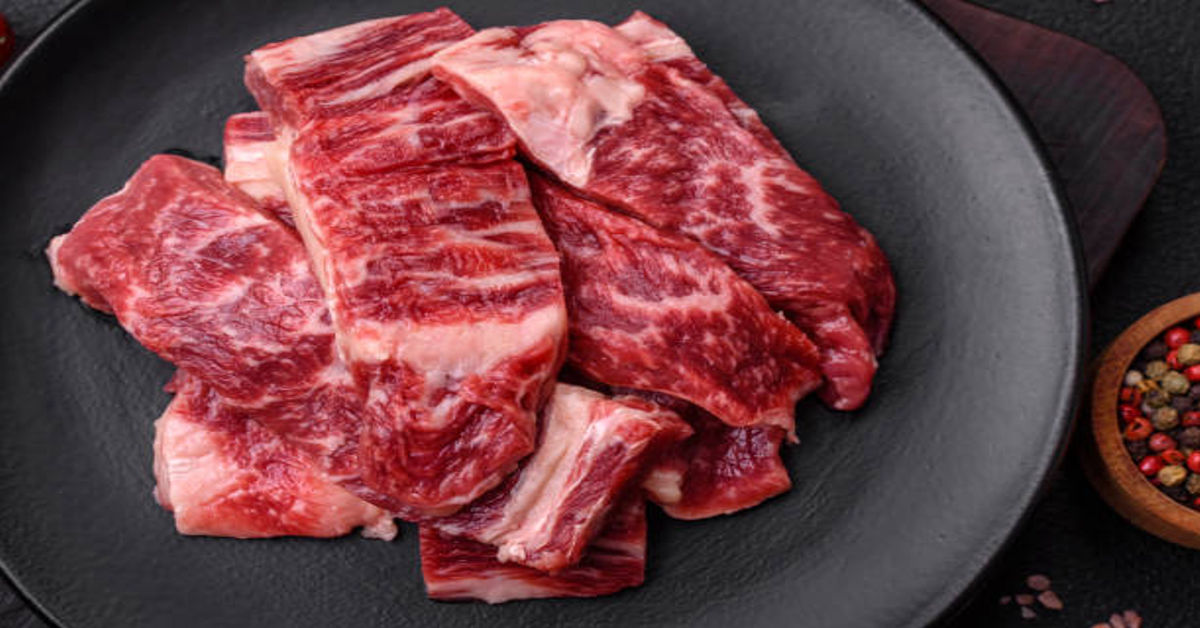Wagyu beef tallow has emerged as one of the most luxurious and versatile ingredients in both traditional and modern cooking, offering a unique blend of flavor, texture, and nutritional benefits. Unlike standard beef fats, Wagyu beef tallow is derived from Wagyu cattle, a breed renowned for its extraordinary marbling, tenderness, and rich taste. The term “tallow” refers to rendered beef fat, which has been clarified and purified to produce a solid fat with a high smoke point, making it ideal for frying, roasting, sautéing, and even baking.
The appeal of Wagyu beef tallow extends far beyond its culinary uses. It is highly valued for its health properties compared to conventional fats due to its favorable composition of monounsaturated and saturated fatty acids. The high concentration of oleic acid, combined with a lower proportion of cholesterol-raising fats, makes Wagyu beef tallow a preferred choice for chefs and food enthusiasts seeking indulgence without compromising nutritional balance. Its versatility allows it to be incorporated in savory dishes, pastries, and even for preservation or cooking techniques that benefit from a neutral yet flavorful fat.
Historically, beef tallow was widely used in cooking before the industrialization of vegetable oils. Today, Wagyu beef tallow represents a premium reintroduction of this traditional fat, now appreciated for both its gastronomic qualities and functional cooking properties. Unlike modern oils, Wagyu tallow imparts a buttery richness and depth of flavor that cannot be easily replicated by plant-based fats. This article explores Wagyu beef tallow in depth, covering its origin, chemical composition, culinary uses, nutritional benefits, storage methods, sustainability considerations, and its place in contemporary gastronomy.
Origin and Production of Wagyu Beef Tallow
Wagyu beef tallow originates from Wagyu cattle, a Japanese breed famous for its intense intramuscular fat, known as marbling. This unique fat distribution is what allows Wagyu beef to produce tallow that is soft, creamy, and exceptionally flavorful. The production process involves rendering, a method where beef fat is slowly melted over low heat to separate pure fat from connective tissues and water. The resulting tallow can then be clarified to remove impurities, yielding a clean, golden fat suitable for high-temperature cooking and long-term storage.
Unlike standard beef fat, Wagyu beef tallow contains a higher proportion of monounsaturated fats and oleic acid. This chemical composition contributes to a smoother mouthfeel, lower melting point, and enhanced flavor profile. The quality of tallow depends on the breed, diet, and rearing practices of the cattle, with grass-fed and grain-finished Wagyu yielding the most prized tallow for gourmet use.
Steps in Wagyu Tallow Production
- Fat Collection: Trimming excess fat from Wagyu cuts, particularly from highly marbled areas.
- Rendering Process: Slowly melting fat over low heat to separate pure fat from water and connective tissue.
- Straining and Clarification: Removing solid residues to ensure a smooth, clean fat.
- Cooling and Storage: Allowing the tallow to solidify at room temperature or refrigeration for long-term use.
Chemical Composition and Nutritional Profile
The nutritional profile of Wagyu beef tallow distinguishes it from other animal fats. It is rich in monounsaturated fatty acids, particularly oleic acid, which is associated with cardiovascular benefits. Saturated fats are present but balanced in a manner that enhances flavor without contributing excessively to cholesterol elevation. Wagyu tallow also contains small amounts of vitamins A, D, E, and K, which are fat-soluble and support metabolic and cellular functions.
Table 1: Approximate Composition of Wagyu Beef Tallow (per 100g)
| Component | Quantity | Notes |
|---|---|---|
| Calories | 900 kcal | Highly energy-dense |
| Total Fat | 100 g | Includes saturated, monounsaturated, and polyunsaturated fats |
| Saturated Fat | 45 g | Provides structure and mouthfeel |
| Monounsaturated Fat | 50 g | Predominantly oleic acid, beneficial for heart health |
| Polyunsaturated Fat | 5 g | Essential fatty acids |
| Cholesterol | 80 mg | Moderate compared to standard beef fat |
| Vitamins | A, D, E, K | Fat-soluble micronutrients |
The high oleic acid content is particularly noteworthy because it contributes to the soft texture of Wagyu tallow, allowing it to melt at lower temperatures than conventional beef fats. This makes it exceptionally suitable for fine cooking, frying, and flavoring delicate dishes without leaving an overly greasy residue.
Culinary Uses of Wagyu Beef Tallow
Wagyu beef tallow has earned acclaim in professional kitchens and home cooking alike due to its versatility and flavor-enhancing properties. Unlike many other fats, it combines a high smoke point with a rich, buttery flavor, making it suitable for both high-heat applications and slow cooking.
1. Frying and Searing
The high smoke point of Wagyu tallow allows it to withstand frying temperatures of 375–400°F (190–204°C), making it ideal for pan-searing steaks, roasting vegetables, or deep-frying potatoes. Foods cooked in Wagyu tallow acquire a golden, crisp exterior while maintaining tenderness and enhanced flavor.
2. Roasting and Baking
Wagyu tallow can be used in place of butter or lard in roasting meats, poultry, or root vegetables. Its ability to render slowly ensures even cooking and natural browning, contributing to a savory, rich flavor. In baking, tallow provides flaky textures to pastries and pie crusts, creating a subtle richness not achievable with neutral oils.
3. Flavoring and Finishing
Due to its mild yet distinct taste, Wagyu tallow is often used as a finishing fat for sauces, soups, and grains. A small spoonful melted over cooked vegetables, rice, or steak enhances umami and adds depth to the dish.
4. Traditional and Gourmet Applications
Historically, beef tallow was used for confit and slow-cooked meats, a practice that has been revived in gourmet kitchens using Wagyu tallow. The combination of slow rendering and natural marbling creates a luxurious texture suitable for high-end culinary presentations.
Table 2: Recommended Uses of Wagyu Beef Tallow
| Culinary Application | Recommended Method | Notes |
|---|---|---|
| Frying | High-heat pan or deep fryer | Crispy textures, rich flavor |
| Roasting | Oven at 350–400°F | Enhances browning and tenderness |
| Baking | Pie crusts, pastries | Provides flakiness and richness |
| Finishing | Sauces, vegetables | Adds umami and smoothness |
| Confit | Slow-cooked meats | Preserves and tenderizes proteins |
Health Benefits of Wagyu Beef Tallow
Despite common misconceptions about animal fats, Wagyu beef tallow offers several health benefits when consumed in moderation. Its nutritional composition supports heart health, cognitive function, and energy metabolism.
1. Cardiovascular Health
The high monounsaturated fat content, particularly oleic acid, has been associated with improved lipid profiles, helping to reduce low-density lipoprotein (LDL) cholesterol and support cardiovascular function.
2. Weight Management and Satiety
Due to its high energy density and slow digestion, Wagyu tallow promotes satiety, reducing the likelihood of overeating. Incorporating it in small quantities can be part of a balanced, calorie-conscious diet.
3. Anti-inflammatory Properties
The fatty acid profile includes compounds that exhibit mild anti-inflammatory effects, supporting metabolic health and reducing oxidative stress.
4. Nutrient Absorption
As a fat-soluble medium, Wagyu tallow enhances the absorption of vitamins A, D, E, and K from foods, supporting bone health, immunity, and cellular functions.
While Wagyu beef tallow is nutrient-rich, it is calorie-dense, and moderation is key to balancing its health benefits with overall dietary requirements.
Storage and Shelf Life
Proper storage of Wagyu beef tallow is essential to maintain quality, flavor, and safety. Tallow is naturally stable due to its saturated fat content, but exposure to heat, light, or moisture can lead to oxidation and rancidity.
Storage Guidelines
- Room Temperature: Keep in a cool, dark pantry for short-term use (up to 1 month).
- Refrigeration: Extend shelf life to 6–12 months in airtight containers.
- Freezing: Store in airtight containers for up to 2 years without significant quality loss.
Avoid metal containers that can react with fats and always use clean utensils to prevent contamination.
Table 3: Storage Recommendations for Wagyu Beef Tallow
| Storage Method | Temperature | Shelf Life | Notes |
|---|---|---|---|
| Pantry | 65–75°F (18–24°C) | 1 month | Keep airtight, away from sunlight |
| Refrigerator | 35–40°F (1–4°C) | 6–12 months | Use clean utensils to avoid contamination |
| Freezer | 0°F (-18°C) | 2 years | Ideal for long-term storage, maintain airtight seal |
Sustainability and Ethical Considerations
Wagyu beef tallow, being a byproduct of premium beef production, can be considered a sustainable ingredient when sourced responsibly. Utilizing the fat from high-quality cattle reduces food waste and maximizes the use of each animal. Ethical and sustainable practices include:
- Sourcing from pasture-raised or humanely reared Wagyu cattle.
- Choosing producers who follow environmentally responsible farming techniques.
- Integrating tallow into recipes as a zero-waste approach, reducing reliance on processed oils.
By adopting responsible sourcing, Wagyu tallow not only enhances culinary experiences but also aligns with environmentally conscious eating habits.
Conclusion
Wagyu beef tallow is a luxurious, versatile, and nutrient-rich ingredient that offers exceptional culinary and health benefits. Its high smoke point, rich flavor, and unique fatty acid composition make it suitable for frying, roasting, baking, and finishing dishes, while its nutritional profile supports heart health, satiety, and nutrient absorption. Beyond its practical uses, Wagyu tallow represents a revival of traditional cooking methods and an opportunity to explore sustainable, zero-waste culinary practices. Proper storage, ethical sourcing, and moderate use ensure that this premium fat remains a safe, delicious, and functional addition to modern kitchens.
By understanding its properties, applications, and benefits, chefs and home cooks alike can elevate meals, explore gourmet techniques, and enjoy the rich, buttery essence that only Wagyu beef tallow provides.
Frequently Asked Questions (FAQs)
1. What is Wagyu beef tallow?
Wagyu beef tallow is rendered fat from Wagyu cattle, known for its marbling, flavor, and culinary versatility.
2. How is Wagyu tallow different from regular beef fat?
It contains higher monounsaturated fats, lower cholesterol-raising compounds, and melts at a lower temperature for enhanced flavor.
3. What are the best culinary uses of Wagyu tallow?
Frying, roasting, baking, finishing sauces, and making confit are ideal applications due to its high smoke point and rich flavor.
4. Is Wagyu beef tallow healthy?
Yes, it contains oleic acid and fat-soluble vitamins, supporting heart health, satiety, and nutrient absorption when used in moderation.
5. How should Wagyu tallow be stored?
Store in airtight containers in the refrigerator for 6–12 months or freeze for up to 2 years to maintain quality.











